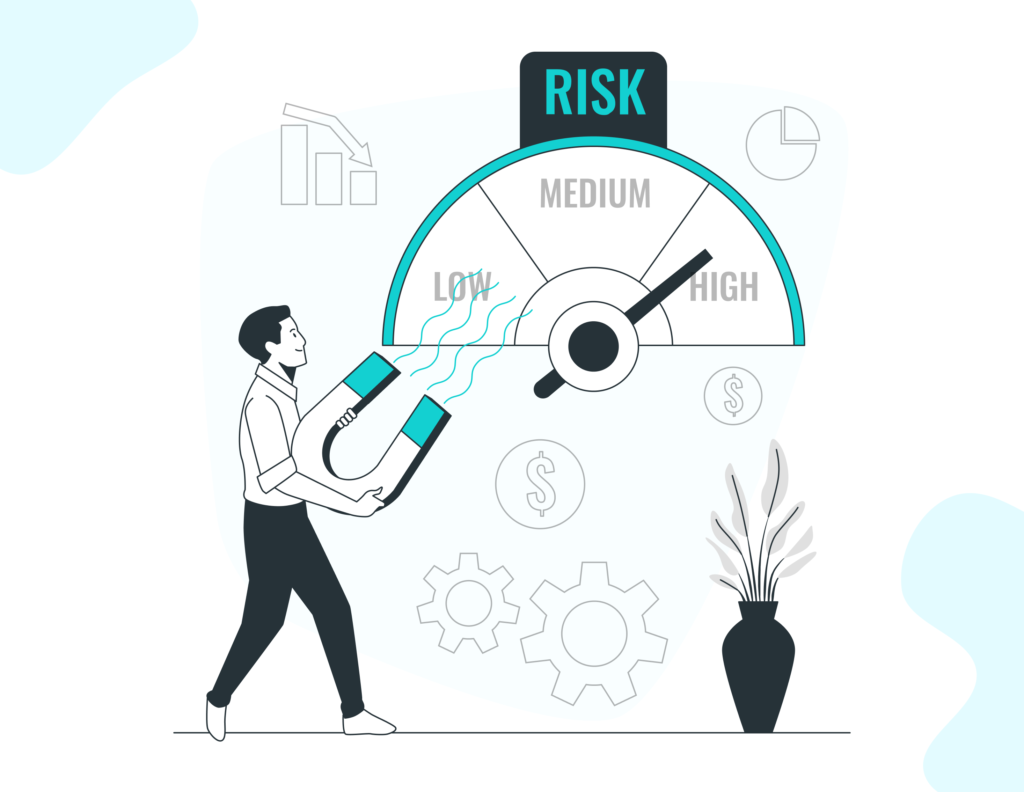AUTHOR: DARCY SHARMA
DATE: 2/11/23
Payment processing is a fundamental[1] aspect of any business, enabling the exchange of goods and services for monetary value. However, not all businesses are treated equally in the realm of payment processing[2]. Some ventures fall into the category of high-risk payment processing[3], which comes with its own set of unique challenges and considerations. In this article, we will explore the world of high-risk payment processing[4], examining its intricacies, industries that often fall into this category, and how businesses can navigate this challenging terrain.
Understanding High-Risk PP
High-risk [5] refers to the handling of payments in industries or businesses that are more susceptible to fraud, chargebacks, or regulatory issues. These industries are considered high-risk due to various factors, including a higher likelihood of financial instability, regulatory scrutiny, and a greater potential for disputes. Common examples of high-risk industries include online gaming, adult entertainment, pharmaceuticals, and e-commerce with high chargeback rates.
Why Businesses Opt for High-Risk PP
You might wonder why any business would willingly choose high-risk PP . The answer often lies in the nature of the industry. High-riskPP can be the only option for businesses operating in certain sectors. These businesses understand that to thrive, they need to offer their customers convenient and secure payment options.

Challenges Faced in High-Risk PP
Navigating high-risk PP is not for the faint of heart. Businesses[1] operating in these industries encounter several challenges, such as stringent regulations, higher processing fees, and the constant threat of chargebacks. Ensuring the security of payment[2] data is also paramount, given the increased risks in these industries.
The Importance of Secure Payment Gateways
In the high-risk PP arena, security is of the utmost importance. Secure payment gateways[3] protect both businesses and customers from fraudulent activities and data breaches. Implementing advanced security measures is essential to gain trust and protect sensitive financial information.
Finding the Right High-Risk Payment Processor
Choosing the right payment processor[4] is a critical decision for businesses in high-risk industries. The processor should have experience in the specific high-risk sector, offer competitive rates, and provide excellent customer support. A reliable payment processor can make all the difference in the success of your high-risk business.
Fees and Rates Associated with High-Risk Processing
8.1. Higher Transaction Fees
8.2. Rolling Reserves
Managing Chargebacks
9.1. Chargeback Prevention
9.2. Chargeback Dispute Resolution
Compliance and Regulations
High-risk businesses are often subject to stricter regulations and compliance requirements. Failure to meet these standards can lead to severe consequences[5], including business shutdowns and legal actions.
Mitigating Risks
To succeed in high-risk PP businesses must implement strategies to mitigate risks. These strategies may include fraud detection, robust customer verification, and ongoing monitoring of payment transactions.
Case Studies: Success Stories
Highlighting successful businesses in high-risk industries that have effectively managed their payment processing challenges can offer valuable insights and inspiration to others in similar sectors.
Benefits of High-Risk PP
Despite the challenges, high-risk PP offers several advantages, including broader market reach and higher revenue potential. When managed effectively, it can be a lucrative venture.
The Future of High-Risk PP
14.1. Technological Advancements
14.2. Regulatory Changes
Benefits of High-Risk PP

High-risk payment processing isn’t just about challenges; it also offers several advantages, which make it a viable option for many businesses in specific industriesCertainly, here are some of the prominent advantages:
- Access to a Broader Market: High-risk payment processing allows businesses to reach a global audience. Many high-risk industries, such as online gaming or adult entertainment, have a broad customer base across different countries. By providing convenient payment options, these businesses can tap into markets they might not otherwise access.
- Higher Revenue Potential: While the fees for high-risk processing may be higher, the revenue potential is also greater. Businesses in high-risk industries often charge premium prices for their products or services, which can offset the higher processing costs. Moreover, the global reach can lead to increased sales and profitability.
- Diversification of Payment Options: High-risk payment processors are well-equipped to handle various payment methods, including credit cards, e-wallets, and alternative payment solutions. This diversity ensures that customers have a convenient and secure way to make payments.
- Flexibility and Customization: High-risk payment processors often offer more flexibility in terms of customization and integration with business-specific needs. This allows businesses to tailor their payment processes to suit their unique requirements.
- Reputation Management: By partnering with reputable high-risk payment processors, businesses can enhance their reputation and build trust with customers. A secure and seamless payment experience can boost customer confidence and loyalty.
The Future of High-Risk Payment Processing
The landscape of high-risk payment processing is continually evolving. To stay competitive and compliant, businesses in high-risk sectors must keep an eye on several key factors that are shaping the future:
Conclusion
In conclusion, high-risk payment processing is a specialized field that demands expertise, diligence, and the right partners. It is not without its challenges, but for businesses in specific industries, it’s often the only way forward. As technology and regulations evolve, the landscape of high-risk payment processing will continue to change. Being adaptable and staying informed will be key to success in this dynamic environment.
FAQs
- What are some common high-risk industries for payment processing?
- High-risk industries include online gaming, adult entertainment, e-commerce with high chargeback rates, and more.
- How can businesses prevent chargebacks in high-risk payment processing?
- Businesses can employ effective fraud detection systems, robust customer verification, and dispute resolution strategies to minimize chargebacks.
- Why is secure payment processing crucial for high-risk industries?
- Secure payment processing builds trust with customers and safeguards sensitive financial information, reducing the risk of data breaches.
- What are rolling reserves in high-risk payment processing?
- Rolling reserves are a portion of funds that high-risk payment processors hold in reserve to cover potential chargebacks and other financial risks.
- Can high-risk payment processing benefit businesses in the long run?
- Yes, when managed effectively, high-risk payment processing can lead to increased revenue and access to a global customer base, making it a viable long-term option for many businesses.





